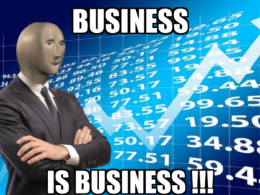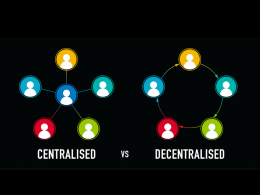Introduction
Technology is moving so fast that the way we view the world is changing before our eyes. There was a time, not so long ago, that the virtual world didn’t exist. Yet today half of our lives are spent on screens in some sort of virtual world of another: meetings, gaming, social media. The lines between the real and the virtual are becoming increasingly blurred. Therefore it is no surprise that the hottest new ticket in the art space is the rendering of 3D objects. At a casual glance these objects may appear as pretty baubles, but make no mistake the potential here is limitless. Edward, better known as CNFT Protege, is an extremely talented artist working in 3D. While his skills would be in demand anywhere he chooses to work within the Cardano ecosystem because of its potential and its great community.
The Artist
Edward discovered his artistic talents by accident. He enrolled in a class in 3D design simply because a friend told him it would be easy to earn an A. To his surprise he both enjoyed and excelled in this area. Artistic endeavors were forgotten for a bit while Edward spent eight years in the Navy, first as an operations specialist and later as a paralegal. After separation from the military, Edward decided that pursuing a legal career wasn’t appealing and began casually experimenting again with 3D designs on Autocad 3d. As a result of his talent and various interactions with Cardano community members, Edward developed a series of medals that can be viewed and purchased on cNFT hubs. Every purchase actually is split between Edward, the stake pool, NFT hubs and 5% goes to a charity. As a result, this one project benefits many aspects of the ecosystem simultaneously. What is fascinating about these medals is that they don’t just live in your wallet. Rather, through pool.pm, you can interact with the medal and post pictures to social media with your favorite stake pool medal. The stake pool might award points toward merchandise for social media posts. The process is as simple as:
- Open your wallet through pool.pm
- Verify that you have a strong cell signal
- Click on the circle with the box at the bottom right
- From there you can screen record or take photos with your medal
- Post to social media
If you think it’s far-fetched, think again. Coca Cola launched an entire media campaign in South Africa using a similar technique. You can read more about that here.
Edward has a variety of clients, many of which are not stake pools. He has created booster packs for the Cardano Stonerz Club. Each pack contains three separate AR images. Additionally, a new collaboration with Cardano420 WEED Stakepool mints 4/20. It is actually based on the 2D work of another artist Joao Lelo. CNFT protege took the original art, rendered it in 3D and added some additional variations. There are many additional projects in the pipeline for this talented artist.
The Aquarium
Of course, there are several artists working in the 3D space. BitFins is not only minting Bokeh Fins right now, they are also in the process of constructing an absolutely magical aquarium which will not only include 9 species of fish and 5500 decoration items, it will also allow you to display 2D NFTs from other collections in placeholder spots along the walls. If the aquarium demo with multiple music settings is any indication, this project is going to raise the bar pretty high when it’s complete. Even if you are not an NFT person, the demo is accessible at no cost on their website. I encourage you to check it out.
Claymates
No article about 3D and Cardano would be complete without Clay Nation which started as Clay Mates in 2021 and recently announced a partnership with Snoop Dogg and Champ Medici. The original Clay Mates mint is sold out and only available on secondary markets. Their current project is to allow all Clay Mates holders to download their matching full body 3D avatar using a NAMI or Eternl wallet. These avatars will then become part of the larger Clay Nation metaverse which, although early in design, intends to become a combination festival / virtual event stage. There are sales of virtual land (called pitches in this metaverse). Some are only for current Clay Mates holders, while another sale is open to the public. After the initial land sale, the team will continue to work on creating infrastructure which can be customized. The space will also have its own utility token $CLAY. The specifics can be viewed in their clay paper.
Summary
So where is all of this going? No one really knows but it definitely isn’t going away any time soon. It has already been estimated that VR and AR could add 1.5 trillion USD to the global economy by 2030. Technology has come a long way since the first mention of AR in the 1990s by a Boeing researcher. The developer tools are more accessible and easier to use. Smart phones and other user interfaces are increasingly powerful and Web AR allows all of this to be viewed without downloading a specific application. This means that the potential uses for this technology are constrained only by one’s imagination. We are already starting to see uses on Amazon. An example would be the ability to see a couch in your living room to check size and color before you purchase. Badges or medals for companies (stake pools) were mentioned above. Certainly the ability to virtually “try on” clothes has arrived as well. In regard to education, while VR and AR will not replace teachers any time soon, they can augment educational experiences. For example there is already a company Curiscope which has t shirts and posters that, when scanned with a phone, demonstrate everything from the inner workings of the human body to the planets of outer space. Imagine the applications for Cardano. Scan the wallet and be instantly taken to a user guide. Scan the QR code and receive product tracking and verification. Receive upgrades for gaming in return for real life product purchases. The potential uses are endless.
Of course there is risk here as well. As with any new technology AR can be used for good…or not. For example the adult film industry already has AR hologram apps for more mature tastes (the avatars are called digital nymphets) which you don’t want on the phones of underage kids. AR glasses that record video may threaten the privacy of others. Potentially you could surreptitiously record someone and tag them with metadata. AR distractions could make travel more hazardous and many other things that are well beyond the scope of this article.
For now we are at the nascent stages of a new component of the Cardano ecosystem. A beautiful, exciting technology with amazing potential that will grow with the community. We have incredible artists that are designing things that would have been impossible just a few years ago. No one really knows where all this is going but I’m glad to be along for the journey.










